Despite the fact that apple and pear trees have been considered the most common fruit trees in the middle lane from time immemorial, there were very few truly reliable, tasty and productive pear varieties, for example, for the conditions of the Moscow region until recently. Over the past few decades, the situation has changed dramatically and at the moment gardeners have plenty to choose from. But the so-called winter varieties, the fruits of which can be stored for a more or less long time, more than two months, are still not so many.
The choice for growing in the regions north of Lipetsk or Tambov is especially small, since it is the late varieties of pear that need a certain amount of heat and sun for good ripening of the wood and the fruits themselves. In areas with short and cool summers, this amount may not be enough. Nevertheless, breeders have obtained varieties that ripen in September-October, and the fruits can last until the New Year, and sometimes even longer. One of these varieties is the Yakovlevskaya pear, a detailed description of the variety with photos and reviews from gardeners is presented in this article.
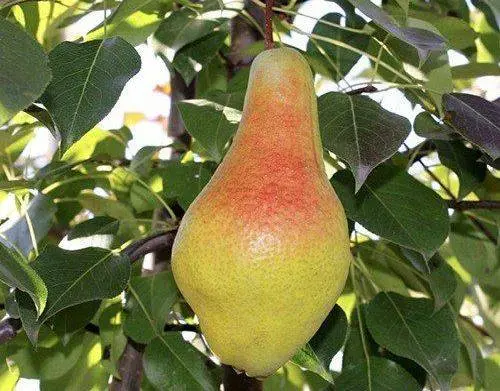
History of creation
In the late 90s of the twentieth century, a group of breeders of the GNU All- Research Institute of Genetics and Breeding of Fruit Plants. Michurin, on the basis of crossing pear varieties Tolgarskaya beauty and Daughter of the Dawn, a whole line of hybrid varieties was obtained: Nika, Chudesnitsa, Feeria, Yakovlevskaya and others. After numerous tests, all these fruit forms received the status of different pear varieties with somewhat similar, but still individual characteristics.
The following scientists took part in breeding the Yakovlevskaya pear variety: S.P. Yakovlev, V.V. Chivilev, N.I. Saveliev, A.P. Gribanovsky. In 2002, this variety was officially included in the State Register and zoned in the following areas:
- Belgorod;
- Voronezh;
- Kursk;
- Lipetsk;
- Orlovskaya;
- Tambov.
Judging by the reviews of gardeners, the Yakovlevskaya pear has taken root well and gives excellent yields in more northern regions, such as Moscow, Yaroslavl and even Leningrad.
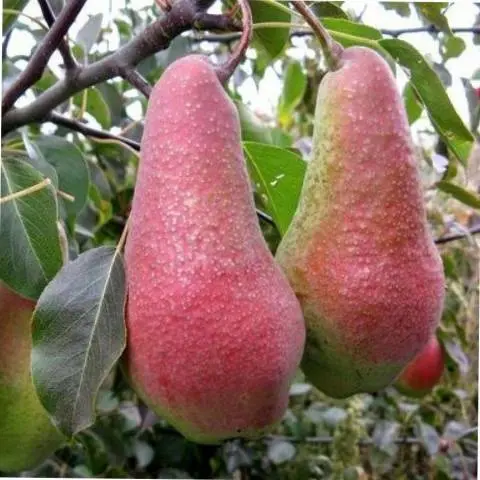
Variety description
Pear trees of the Yakovlevskaya variety can be classified as medium-sized. Mature trees can reach 10 meters in height, although much depends on the rootstock on which the graft was made. On average, a tree grows 25-30 cm in height and 15 cm in width per year. The crown has a fairly regular wide-pyramidal shape of medium density.
Shoots are glabrous, red-brown in color, of medium thickness, growing mostly straight. Medium-sized dark green leaves have an elongated oval shape with a smooth surface and a glossy sheen. There is a finely serrated serration along the edges. The shape of the base of the leaf is obtuse, and the leaf blade itself is slightly curved upwards.
There are numerous lentils. The kidneys are medium in size, recurved, smooth. Their shape is conical. Leaf petioles are medium in both length and thickness. Stipules are awl-shaped.
The variety is practically self-fertile, although for better fruit set it is recommended to have a pear tree of any variety nearby, but with similar flowering periods. In general, the presence of a pollinator for the Yakovlevskaya pear is not an end in itself, because in an amateur garden, even the harvest obtained from one adult pear without additional pollination is enough for the whole family in abundance.
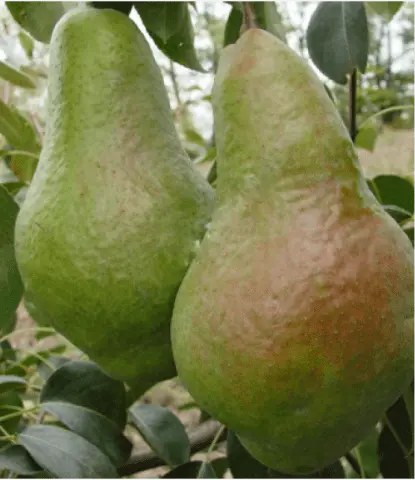
Pear Yakovlevskaya is traditionally distinguished by a rather late start of fruiting. The first fruits from the moment of planting can be expected only after 5-6 years.
The variety officially belongs to the winter variety, although due to the fact that the average harvest time is September-October, some call the Yakovlevskaya pear an autumn variety. Indeed, the so-called removable maturity of pears usually occurs in the second half of September. But often the fruits are allowed to gain sweetness and hang until mid-October. In this case, the fruits have time to color and acquire additional juiciness.
A distinctive feature of the Yakovlevskaya variety is the ability for long-term storage. Under normal home conditions, pears can be stored until the New Year. If you create ideal storage conditions for them, with low temperature and humidity, then the shelf life can increase up to 5-6 months.
The yield of pear Yakovlevskaya is high. In industrial plantings, it averages 178 q/ha. In any case, at least 40-50 kg of fruit can be obtained from a ten-year-old tree.
In terms of winter hardiness, this variety is not at all in last place – it is above the average level of those varieties that are traditionally grown in Central Our Country.

In addition, pears of this variety are distinguished by good resistance to fungal diseases, primarily to scab, the scourge of all pome crops, and entomosporiosis.
Fruit Characteristics
The fruits of the Yakovlevskaya pear are very beautiful – they have a fairly regular elongated classic pear shape. The size of pears is relatively large – the weight of one fruit can vary from 120 to 210 grams.
The skin is smooth, even, of medium thickness, slightly oily, has a small layer of wax coating, which is designed to serve as protection from adverse environmental influences.
If at the time of harvesting maturity, pears can have a rather uniform green color, then at the stage of consumer maturity, the skin turns yellowish. One part of the fruit, usually facing the sun, has a distinct reddish blush.
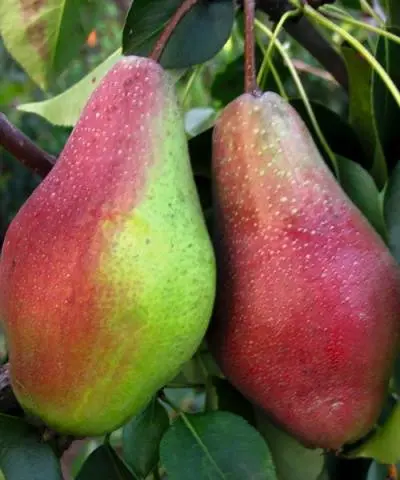
The stalks are medium in length and thickness and have a curved shape. Funnel narrow, shallow depth. Cup of semi-open type, non-falling. The saucer is wide, medium depth. The heart is bulbous in shape.
The seed chambers in the fruits are closed, medium in size. The small seeds are conical and brown in color.
The pulp of the fruit is of medium density, juicy, cream color. It has a delicate semi-oily texture with a slight granulation. The taste qualities of the fruits were rated at 4,5 points on a five-point scale.
According to their composition, the fruits of the pear Yakovlevskaya contain:
- The sum of sugars – 11,6%;
- Titratable acids – 0,4%;
- Dry matter – 12,8%;
- P-active substances – 148,0 mg / 100 g;
- Ascorbic acid – 10,1 mg / 100 g.
Pears of this variety, as already noted, are well and long stored, can be transported over long distances.
The use of fruits is universal. As a rule, pears of winter varieties are valued, first of all, for their keeping quality, which allows you to enjoy the taste of fresh fruits even in winter. But from the fruits of this variety, very tasty jam, jam, compote, marmalade and marshmallow are also obtained. It is suitable for drying, and even for making homemade wine.

Like many high-yielding varieties, the Yakovlevskaya pear has one drawback – with a thickened crown or with too abundant a yield, crushing of the fruit can occur. Therefore, timely pruning and thinning of the crown is very important for trees, and it is also possible to normalize the ovaries after flowering.
Reviews of gardeners
Most gardeners leave positive feedback about this pear variety. After all, there are few winter varieties of pears that would grow and bear fruit well in the conditions of the middle zone. The only drawback is not the best taste of the fruit, but, as you know, taste is a very individual matter.
Conclusion
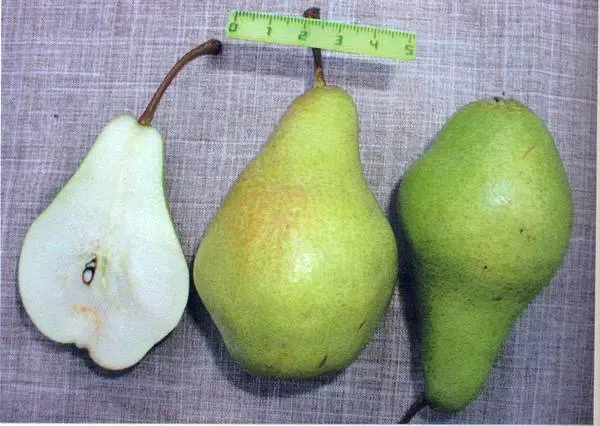
Pear Yakovlevskaya will surely delight you with juicy and tasty fruits that can last for quite a long time. It is only necessary to show patience and wait for its fruiting, which comes relatively late.









